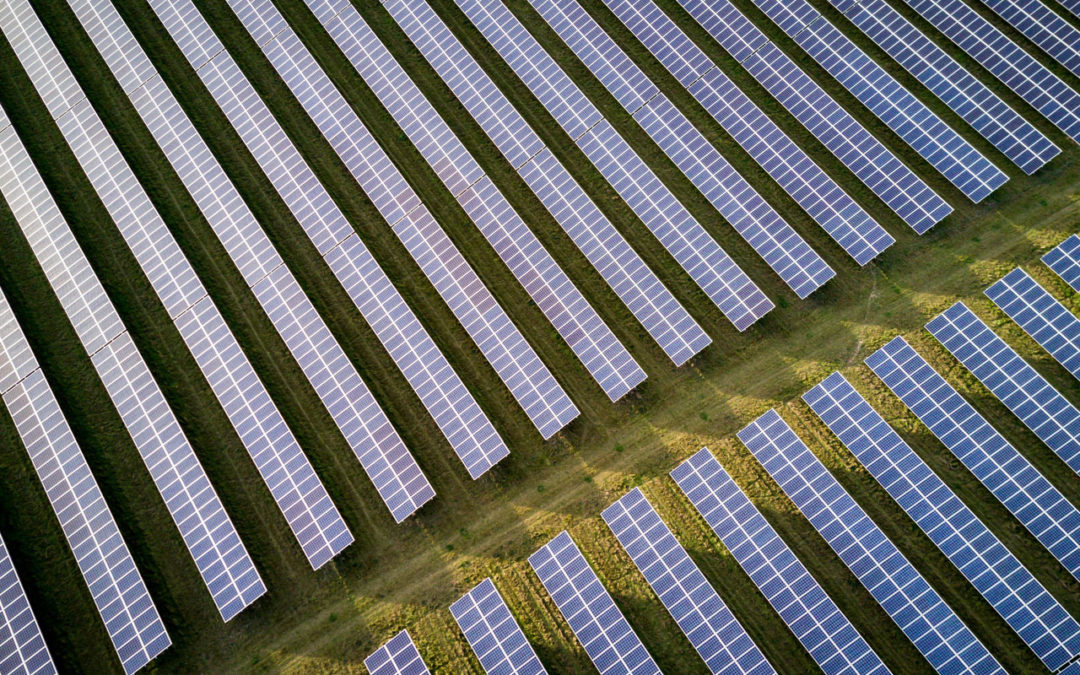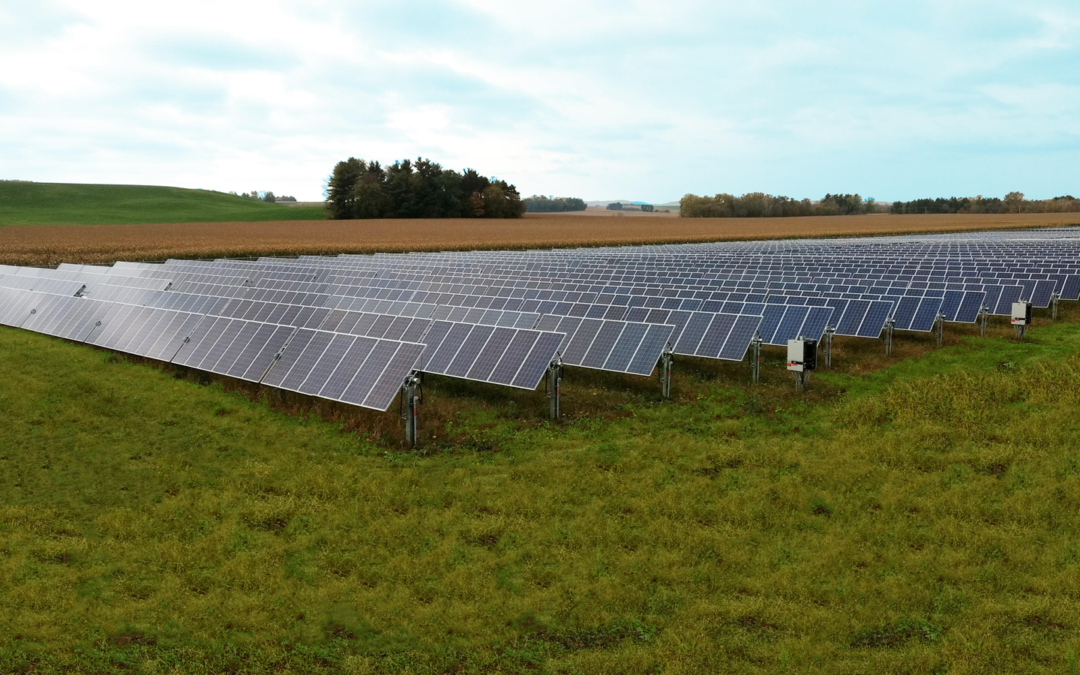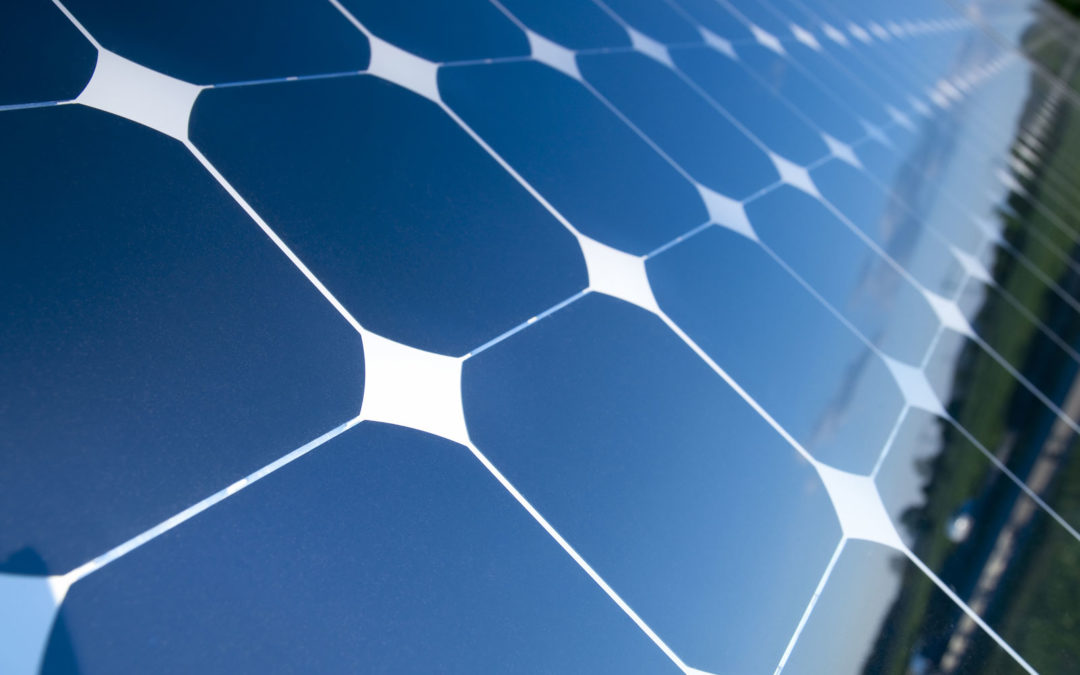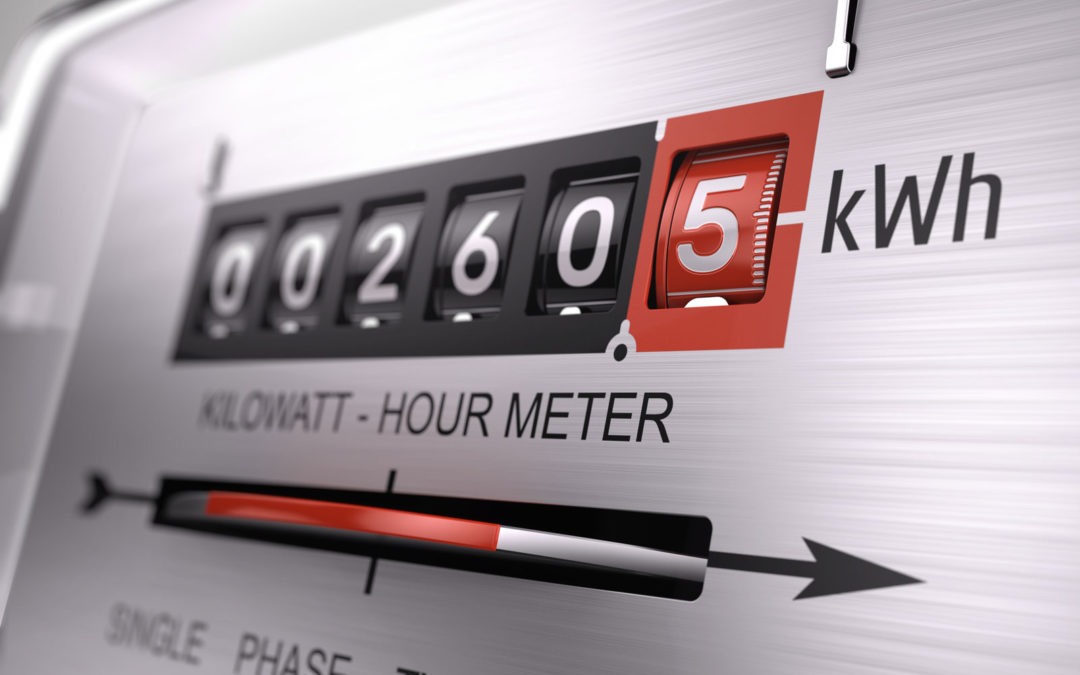by Jane McCurry | Jun 24, 2020 | Electric Vehicles, Programs, Public Service Commission, Utilities
On Thursday, June 18th the Wisconsin Public Service Commission (PSC) unanimously approved Xcel Energy’s three pioneering electric vehicle (EV) programs. Xcel, whose western Wisconsin service territory includes Eau Claire, La Crosse and Ashland, proposed two residential programs in addition to a commercial pilot program, all intended to reduce the upfront cost of installing electric vehicle charging infrastructure. These programs will make it easier and more affordable for individuals and businesses to install electric vehicle chargers and commit to driving electric.
In 2014, Madison Gas & Electric’s Charge@Home electric vehicle pilot program was approved by the PSC. Charge@Home launched in 2016, and like Xcel’s programs, it aims to help with the obstacles of EV adoption. Xcel’s two residential programs mark the first time a full-fledged electric vehicle program has been approved in Wisconsin.
Residential Programs
Under both of the residential programs, Xcel will install and maintain ownership of a level 2 charger on the customer’s property, provided the customer owns an electric vehicle. Customers will have the option of paying more upfront coupled with a lower monthly fee through their “pre-pay” option, or taking a “bundled” approach and paying more per month while foregoing the upfront charge. While customers will end up paying back the cost of the system over time, Xcel’s ownership of the charger means the expense of upkeep and replacement (if necessary) will be paid for by Xcel.
Under one of the programs, the electric vehicle charger will meter the electricity used to charge the car, which will be billed on its own EV-only time-of-use rate.* This means that customers can take advantage of the cost savings of charging their EV using inexpensive electricity overnight without having to switch their whole house to a time-of-use rate or install a second meter.
The second residential program is for customers who have on-site solar generation or who already use a time-of-use rate. This program is patterned after the first, except that the electric vehicle charging will not be put on its own rate. The whole home, including the EV charging, will be billed at Xcel’s existing residential time-of-use rate.
Commercial Pilot Program
Xcel will also run a commercial electric vehicle pilot program. In this pilot, Xcel will be studying an alternative to current line extension* rules. The utility will help customers finance the cost of make-ready infrastructure* needed for EV charging stations, which includes all necessary electrical equipment to operate the stations. Customers will pay the utility back over time as they use more electricity to charge their cars. The commercial customer would also have the option of letting Xcel own the charging stations, not just the make-ready, in which case the customer would pay an additional monthly fixed fee. These options will help commercial customers bring down what can sometimes be a very high upfront cost to install make-ready and charging infrastructure.
It can be expensive to install the equipment needed to recharge electric vehicle batteries, especially in commercial settings. We commend Xcel for finding creative solutions to some of the upfront cost barriers to electric vehicle ownership and deployment. These programs give Wisconsin customers more options for affordable electric vehicle charging and we’re excited to see the PSC approve them.
LINE EXTENSION • When the utility needs to add new electrical infrastructure to get electricity to a customer meter, it’s called a line extension. There are costs associated with adding this infrastructure, and approved formulas that help the utility calculate which costs the customer will pay.
MAKE-READY INFRASTRUCTURE • All of the electrical equipment up to (but not including) the EV charger. This includes wiring, conduit, electrical panel upgrades, and any other equipment or upgrades that are needed to place a functioning EV charger in the location.
TIME-OF-USE RATE • A time of use rate means that the amount you pay for electricity changes depending on the hour of the day and the day of the week. Typically, that means you pay more during daytime hours on weekdays, when it’s more expensive for the utility to generate and deliver that power, and less at night and on weekends, when the cost of supplying electricity to customers is significantly lower.

by Michael Vickerman | May 28, 2020 | Local Government, Public Service Commission, Renewables, Solar, Utilities
The volume of solar generation slated to supply power to Wisconsin electricity customers would nearly double if state regulators approve Madison-based Alliant Energy’s ambitious plan to acquire six Wisconsin solar farms for its generation portfolio. Alliant’s application will be filed shortly.
Spanning the state from Grant County in the west to Sheboygan County in the east, the six farms will provide 675 megawatts (MW) of capacity, nearly matching the combined solar commitments made by other Wisconsin utilities thus far.
ALLIANT ENERGY’S PLANNED SOLAR ACQUISITIONS
The projected output from this massive investment in solar generation equates to the average usage of 175,000 Wisconsin households. If approved, Alliant would become the largest provider of solar power in Wisconsin by a large margin (see Table 1).
TABLE 1: RATE-BASING WISCONSIN SOLAR FARMS
This is an astonishing jump from the two megawatts of solar power supplying electricity to Alliant’s Wisconsin customers today. Though Wisconsin has about 150 MW of operating solar capacity right now, by year’s end that number should surpass 300 MW, when the 150 MW Two Creeks plant in Manitowoc County is placed in service. And by the end of 2021, solar capacity in Wisconsin should be within striking distance of a gigawatt (1,000 MW).
This fleet of solar farms will fill the capacity hole that will materialize in late 2022 when Alliant shuts down its 35-year-old Edgewater 5 power station in Sheboygan for good. Earlier this month, Alliant announced plans to retire the 385 MW coal-fired plant in the next two years. Like many other coal plants in Wisconsin and elsewhere, Edgewater 5 has become an increasingly marginal power source, displaced by lower-cost gas-fired and renewable generating capacity.
Though the shutdown of Edgewater 5 can proceed without approval from Wisconsin’s Public Service Commission, the addition of the six solar farms to Alliant’s rate base automatically triggers a PSCW review process. To obtain regulatory approval, Alliant must demonstrate that these six solar farms will reduce its operating costs and provide other tangible benefits to customers without sacrificing reliability.
Alliant’s investment in this tranche of solar capacity should amount to about $900 million and will take the utility two-thirds of the way towards its goal of adding a gigawatt of solar generation by the end of 2024.
As with the first crop of solar farms approved in 2019 and earlier this year, the development work is being undertaken by independent power producers (see Table 2). Two of the projects–Savion Energy’s 49.9 MW Richland County solar farm and Geronimo Energy’s 50 MW North Rock solar farm–have already been approved for construction, but the remaining four require siting permits. The PSCW has jurisdiction over the three largest solar farms, and will issue decisions in late 2020 and early 2021. Jefferson County will review the 75 MW Ranger Power project later this year. Assuming the PSCW green-light’s Alliant’s application to acquire the projects, all six solar farms should be operating before the close of 2023.
TABLE 2: ALLIANT ENERGY’S PLANNED SOLAR ACQUISITIONS
In each year of operation, these projects will pump a combined $2.7 million into the coffers of host counties and townships. Over 30 years, revenues to local governments will top $80 million. Participating landowners will also reap economic dividends in the form of rental income.
One can access Alliant’s application and supporting documents from the PSCW under Docket No. 6680-CE-182. In all likelihood, the PSCW will make its decision on Alliant’s application in early 2021. To learn more about solar farms in Wisconsin visit RENEW’s frequently asked questions page.
Alliant’s application represents a major milestone in the development and provision of renewable energy in Wisconsin. Whether undertaken by utilities, local governments, businesses or residents, each new investment in solar and wind power generation strengthens Wisconsin’s economy and builds cleaner, healthier, and more resilient communities.

by Michael Vickerman | Apr 30, 2020 | Local Government, Programs, Public Service Commission, Renewables, Solar, Utilities
The Public Service Commission this week signed off on the newest solar farm slated for construction this year in Dane County. This solar power plant will cover 58 acres at the northern end of Dane County Regional Airport, and will involve more than 31,000 panels mounted on single-axis tracking systems. Madison Gas & Electric (MGE) will own and operate the solar plant, and expects to complete construction in the fourth quarter of 2020.
MGE’s solar field is noteworthy in that it will produce clean electricity for only one customer: Dane County. This will be the first example in Wisconsin of an offsite solar project dedicated to a single customer, albeit one with multiple facilities in MGE territory.
Through a long-term contract with MGE, Dane County will purchase the project’s output to offset its own purchases of grid-supplied electricity over the course of the facility’s 30-year-plus life. At nine megawatts (MW), the facility should produce on average 18 million kilowatt-hours a year. All told, the solar farm’s output should equate to about 40% of the electricity consumed at county-owned facilities served by MGE.
The PSC decision contained two separate approvals. First, the agency approved the power purchase agreement between MGE and Dane County, which is provided through the utility’s Renewable Energy Rider service. Under the contract, Dane County will pay 5.8 cents/kWh for electricity generated in the first year of operation, which will result in immediate savings. That price will escalate 2% per year over the contract’s term, which should track closely with anticipated increases in utility energy costs. After 30 years, Dane County will have paid off MGE’s entire investment.
The PSC also authorized the expenditure of $16 million to permit, build, and operate the solar field at the airport. The installed cost of the project equates to $1.78/watt, in line with other, smaller utility-owned projects such as MGE’s 5 MW facility now under construction at Middleton’s Morey Field.
Dane County is the third MGE customer to take service from an offsite solar array built under the Renewable Energy Rider service, following in the footsteps of the City of Middleton and the Middleton-Cross Plains Area School district. Those two customers have committed to purchase the output from a combined 1.5 MW share of the Morey Field solar array, which should commence operations in June 2020.
Notwithstanding its voluntary nature, MGE’s Renewable Energy Rider program has proven to be an attractive option for local governments that have adopted aggressive clean energy goals but are limited in their capacity to host solar systems on all their facilities. Later this year, MGE will file an application to build a 7 MW solar farm to serve the City of Madison and the Madison Metropolitan School District (MMSD). As with Dane County, MGE is the electric provider for many facilities owned by the City and MMSD. The solar array will be located near the Dane County Landfill in southeast Madison.

by Michael Vickerman | Feb 20, 2020 | Public Service Commission, Renewables, Solar, Utilities, Utility Scale
The Public Service Commission today cleared the path for the Badger Hollow solar farm to become a utility-owned generating asset in its entirety. Approved in April 2019 and now under construction, the 300 megawatt (MW) plant in western Iowa County will soon be co-owned by a third utility, Milwaukee-based Wisconsin Electric Power Company (WEPCO). Chicago-based Invenergy is the developer for Badger Hollow and will oversee the construction process until its completion in 2021
As a result of today’s action, WEPCO and Madison Gas and Electric (MGE) will jointly acquire a 150 megawatt share of this facility, which should start sending power into the grid by the end of 2020. Shares of the 300 MW solar farm will be divided equally between WEPCO, MGE, and Green Bay-based Wisconsin Public Service.
After reviewing the applicants’ filings, the PSC determined that both MGE and WEPCO need new generating capacity in the near future, and that this 150 MW increment of Badger Hollow would be part of the least-cost expansion plan for both utilities.
RENEW submitted a letter of support for the acquisition, as did the cities of Milwaukee and Madison. Calling attention to the state’s clean energy goals as well as those of the two cities and the utilities that serve them, our comments emphasized the economic and environmental value that Badger Hollow will yield to utility customers as well as to project participants, host communities, and the state as a whole.
The PSC’s approval effectively brings the first chapter of utility-scale solar development in Wisconsin to a close. Since June 2018, the PSC has reviewed four proposals to build nearly 700 MW of in-state renewable generating capacity, and gave the green light to all of them. The following table summarizes these projects and their relationships to Wisconsin electricity providers.
| Project |
Capacity (in MW) |
Developer |
Utility participant(s) |
Location (by county) |
| Badger Hollow |
300 |
Invenergy |
WEPCO (100 MW)
MGE (100 MW)
WPS (100 MW) |
Iowa |
| Two Creeks |
150 |
NextEra Energy |
WPS (100 MW)
MGE (50 MW |
Manitowoc |
| Point Beach |
100 |
NextEra Energy |
WPPI Energy |
Manitowoc |
| Badger State Solar |
149 |
Ranger Power |
Dairyland Power Cooperative |
Jefferson |
The next wave of solar farms will begin washing through the state regulatory review process this spring. The first one out of the gate is the Paris Solar Farm, located in Kenosha County. Invenergy’s application to build the 200 MW solar farm was submitted yesterday. Dockets have been opened for several other prospects in Wisconsin. Listed below are the solar farm projects that we anticipate will be reviewed by the PSC this year.
| Project |
Capacity (in MW) |
Developer |
Location (by county) |
Docket number |
| Paris |
200 |
Invenergy |
Kenosha |
9801-CE-100 |
| Grant County |
200 |
NextEra Energy |
Grant |
9804-CE-100 |
| Wood County |
150 |
Savion Energy |
Wood |
9803-CE-100 |

by Tyler Huebner | Jan 30, 2020 | Local Government, Public Service Commission, Solar, Utilities, Utility Scale
Today, the Public Service Commission of Wisconsin approved another solar farm: the Badger State Solar Farm to be located in Jefferson County, Wisconsin.
Badger State will be a 149-megawatt solar farm, and will supply electricity to Dairyland Power Cooperative. Dairyland is a wholesale energy provider for 24 rural electric cooperatives, 18 of which are located in Wisconsin. Dairyland also provides energy to an additional seventeen municipal electric utilities, ten of which are in Wisconsin.
The solar project’s developer is Ranger Power, one of RENEW Wisconsin’s Business Members.
This project marks the fourth solar farm approved by the Wisconsin PSC in the past 9 months, and the solar projects approved now total 699 megawatts. Badger State should be operational by 2021.
The project is expected to generate enough renewable energy to power over 20,000 homes, according to a Dairyland Power news release from March 2019, when their power purchase agreement was announced.
The project was given a unanimous verbal approval today, and a final order will follow in the next few weeks. This was the final decision made by retiring Commissioner Mike Huebsch, who announced his retirement earlier this month.
RENEW Wisconsin’s Executive Director Tyler Huebner said, “The Badger State Solar will continue Wisconsin’s steady march towards a clean, renewable energy future, and will help Dairyland Power Cooperative meet its goals to increase the sustainability and diversity of its power generation sources. Congratulations to Ranger Power and Dairyland Power Cooperative on this project approval!”
Statistics about the Badger State Solar Farm
- 149 megawatts
- Expected to produce enough electricity for about 20,000 Dairyland Power Cooperative customers each year
- Electricity Production will be about 0.4% of Wisconsin’s total 2018 electricity sales, and about 8% of Dairyland Power’s 2018 Wisconsin retail sales.
- Located on approximately 1,200 acres which is 0.5% of Jefferson County’s farmland
- The project developer expects to utilize pollinator-friendly plants under the solar panels that will help rejuvenate the soil underneath the array.
- Under Wisconsin’s energy generation shared revenue law and renewable energy incentive payment laws, the local governments where the arrays are located will receive a substantial economic boost: Jefferson County will receive approximately $348,000 annually, the Town of Jefferson $125,000 annually, and the Town of Oakland $123,000 annually.
Statistics about the 4 solar farms approved by the PSC
Badger Hollow Solar (Iowa County), Two Creeks Solar (Manitowoc & Kewaunee Counties), Point Beach Solar (Manitowoc County), and now Badger State Solar (Jefferson County) received PSC approvals between April 2019 and January 2020.
- Total of 699 megawatts of solar power production
- Expected to produce enough power for about 178,000 average Wisconsin homes’ annual energy consumption
- This amount of electricity produced would be about 2.0% of Wisconsin’s total 2018 electricity sales
- These four projects will be located on approximately 5,300 acres of land, about 0.05% of Wisconsin’s farmland. In total Wisconsin has approximately 34,700,000 acres of land.
- The hosting local governments (townships and counties) will receive $2,796,000 annually once these four projects are operational.

by Tyler Huebner | Jan 7, 2020 | Renewables, Solar, Utilities
Our goal is to streamline the process for renewable energy installations and utility reviews.
Over the past two years, RENEW Wisconsin has been actively working as a member of the Wisconsin Distributed Resources Collaborative (WIDRC) to modernize and improve the necessary forms for applying to install a new distributed generation (DG) system in Wisconsin.
We are excited to help spread the word that as of January 1, 2020, the new forms are available and recommended for use!
These forms represent one of the first formal steps in the process of getting approval to install a new distributed generation system in Wisconsin. Distributed generation systems include solar electric (photovoltaic), small wind, battery energy storage, biogas or biomass electric generators, and/or other technologies that fall under Wisconsin Administrative Code Chapter PSC 119.
Access the New Wisconsin DG Application Forms
Distributed generation installers must complete these forms and submit them to their local electric provider to start the process of obtaining the ability to “interconnect” with the local electricity grid.
You can download the new forms here. See the right-hand column “New Wisconsin Interconnection Forms” for the links to each form.
These DG application forms replace the 6027 and 6028 forms and consolidate the information needed into one “base” form, the Wisconsin Standard Distributed Generation Application Form. Then, installers will fill out a more streamlined technology-specific form to provide the information on which type of distributed generation system(s) will be installed.
The forms are fillable in PDF and can be digitally saved to speed up the process. In addition, the forms now clarify that each size category for DG systems is based on AC electricity ratings.
Installers should continue to use the same 6029 (20 kilowatts and under) and 6030 (above 20 kilowatts) Interconnection Agreement forms when the system is ready to be interconnected to the utility.
Reducing Solar “Soft Costs”
Improving these forms is one of many activities we are undertaking to reduce the “soft costs” of installing solar and DG systems in Wisconsin. In particular for solar, where approximately 1,000 systems are now being installed annually in Wisconsin, we’re looking to save time in the permitting, inspection, and interconnection processes. Time saved in each of those processes will add up quickly when installers are doing it one thousand times each year!
To make this happen, Jodi Jean Amble, our Communications & Events Director, spent a lot of hours designing and constructing these new forms to be very user-friendly. We are hopeful these forms will make the DG application process a little bit easier for our members and all the companies that need to use them.
To learn more about this process and update, please check out this letter that was provided to Wisconsin electric utilities and DG installation firms.




